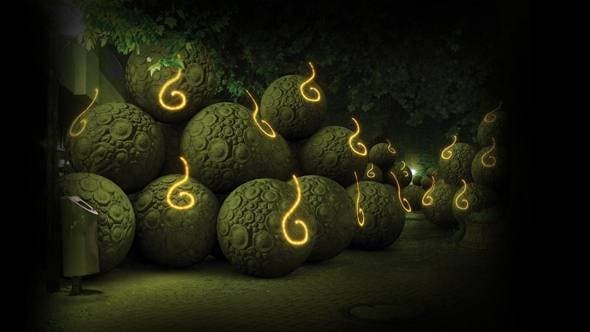Trauma
Disjoint-and-click.
But you're not left floundering entirely. Hidden in each dream are nine different Polaroid photographs, frames within frames, which offer snapshot memories of key moments in the woman's life: her first day at school, her bedroom when growing up, how she was feeling when studying for her law degree. In addition there are key photographs showing arcane symbols that can be drawn on the screen in order to interact with the world. At their simplest, these are directional controls. A downstroke to move backwards, a sideswipe to move left, a crescent to turn around.
But soon you learn more complex rune shapes to perform further dream magic: finger incantations to identify figures motion-blurred in the frame, or cause objects to circle down drains, or lift heavy orbs from the ground. The interactive vocabulary is limited and precious. You learn just a couple of shapes in each of the four chapters, taking the language you absorb into other chapters to access hidden, alternative resolutions.
The four dreams are quickly resolved, and playing through the entire game will take less than an hour, only a little more if you attempt to collect everything on offer. The puzzles, such as they are, are simple and most can be solved simply by learning the right runic shape and identifying where it must be deployed. You've no inventory to speak of, no NPCs to interact with, and your reach into the world is limited to movement and that tight clutch of shapes. As such, the game banks on its ambiance and mystery to engage and entertain - and on this count, it's a success.

The interstitial movies are reminiscent of Julian Schnabel's film of The Diving Bell and the Butterfly, while the script and, in particular, Anja Jazeschann's performance as the young woman offer a tender insight into the frustrating vagaries of lying in a hospital bed, waiting to recover from a life-threatening accident. It's territory rarely touched upon by video games. The looping routes within the dreams themselves disorientate and the long-exposure photography, coupled with Martin Straka's melancholy soundtrack, gives the dream levels an otherworldly feel.
Trauma is too slight and too leftfield to attract a wide audience, but it offers a fascinating vision of game, film and still life meeting to create something both fresh and familiar. Its creator's aspirations may lie close to a filmmaker's, but this is a very different kind of homage to cinema than that espoused by Rockstar's Housers and their many imitators.
Thoughtful, mysterious and haunting, Trauma is best approached as a curio. Its execution is arguably stronger than its ideas, and the narrative trajectory of the game has no surprises in it, outside of the surreal tone. But as an artwork exploring the mind of a trauma victim, its singular voice and approach stick in the mind.
